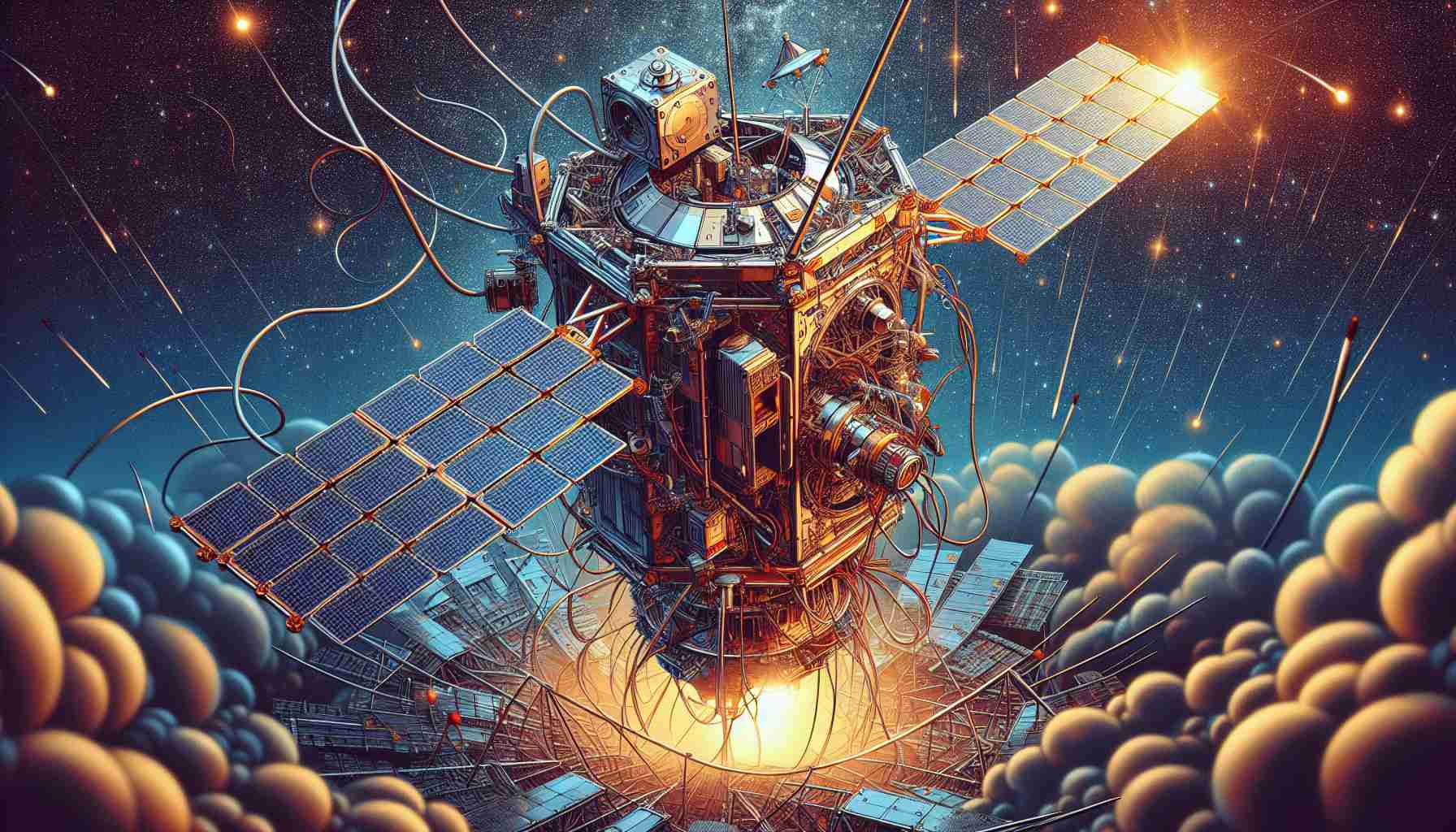
In a remarkable achievement, students at the University of Maine successfully launched their first small research satellite on July 4, marking a significant milestone for the institution. Within just three months of its launch, the satellite has started delivering valuable data that is already being utilized across multiple research disciplines.
This student-designed satellite specializes in capturing Earth imagery and gathering essential climate information. PhD student Arman Kiani, who relocated from Iran, expressed his enthusiasm for working with the satellite data at UMaine’s Wireless Sensing Lab. He emphasized that the environment fosters motivation and innovation in satellite research.
Dr. Ali Abedi, an associate vice president for research, highlighted the satellite’s global impact, noting that over 4,000 researchers worldwide now access its climate data. This information is critical for investigations into climate change, water quality, and energy production. Abedi remarked on the limitless potential this project offers, encouraging students to creatively analyze and apply the collected data.
Another PhD student, Mersedeh Najishabahang, is utilizing the satellite’s data to study wireless communication in forested regions, adapting her research to reflect changing landscapes. The satellite’s success not only advances academic knowledge but also supports Maine’s space industry, promoting efficiency in tourism and agriculture.
Students at UMaine gain invaluable practical experience that enhances their learning and prepares them for careers in engineering and space exploration. As the program continues to thrive, the students strive toward ambitious goals, embodying the spirit of innovation and inquiry.
Maine’s Student-Built Satellite: A Catalyst for Education, Research, and Industry Growth
In a pioneering feat for the University of Maine, the recent launch of the student-designed satellite not only showcases the capabilities of emerging engineers but also promises to position Maine as a center of innovation in satellite technology and space research. With its successful launch, the satellite presents new avenues for practical learning, interdisciplinary studies, and collaboration with the commercial space sector.
What new scientific questions does the satellite address?
A significant advancement this satellite contributes to is the ability to monitor and analyze real-time environmental changes. Specific scientific inquiries include studying urban heat islands in cities across the northeastern United States, tracking the migration patterns of wildlife, and assessing the impact of climate-induced natural disasters on local ecosystems. This makes the satellite not just a tool for academic exploration but a valuable asset for practical climate resilience strategies.
What are the key challenges associated with student-led satellite projects?
One of the foremost challenges is the technical complexity involved in developing and operating such advanced technology. Students are required to master a variety of skills, from engineering and programming to data analysis and project management, which can be daunting for those without prior experience. Moreover, funding is another significant hurdle, as securing sufficient financial support for the entire lifecycle of the satellite project, including construction, testing, and data distribution, can prove difficult.
What controversies surround the satellite’s launch?
Some critics raise concerns regarding the safety and environmental impacts associated with launching satellites, particularly regarding the increasing number of objects in low Earth orbit. The potential for space debris and its implications for both future missions and space safety is an ongoing debate. Additionally, there is discussion about equitable access to satellite data, as not all researchers and institutions have the same capabilities to benefit from high-quality satellite information.
Advantages of the Student-Built Satellite
1. Hands-on Learning: Students gain essential engineering and research skills that enhance their career prospects in fields related to aerospace, environmental science, and technology.
2. Data Accessibility: The satellite is designed to democratize access to valuable data, allowing researchers from various disciplines to utilize it without extensive financial burden.
3. Economic Growth: The project aligns with Maine’s growing aerospace industry, potentially attracting investments and fostering local job creation.
Disadvantages of the Initiative
1. Resource Intensity: The effort demands significant time and financial resources, which could divert attention from other important academic pursuits.
2. Technical Risks: There is an inherent risk in launching space technology, including the potential for failure, which could discourage future student endeavors if not managed correctly.
3. Sustainability Concerns: The long-term sustainability of such projects may be questioned, especially if funding and organizational support wane over time.
As the University of Maine continues to capitalize on this project, it is clear that this student-built satellite serves as more than simply a vehicle for research; it is a dynamic platform that connects education, science, and industry—all while inspiring the next generation of innovators.
For more information on university-led research initiatives and satellite technology, visit NASA or explore other related topics on educational advancements in space technology at SpaceX.



